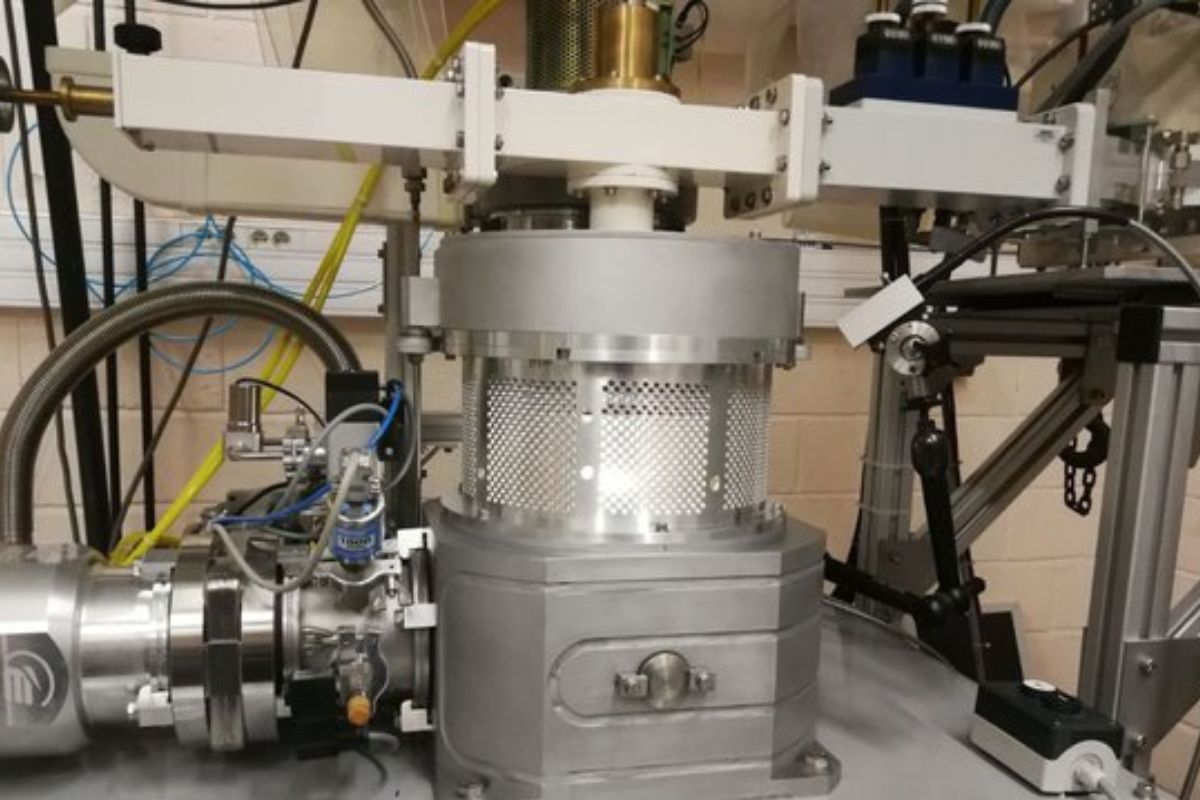
How Are Diamonds Formed: The Science Behind the Sparkle
Diamonds, remarkable for their hardness and clarity, have captivated humans for millennia. But beyond their allure, they carry the secrets of deep Earth processes. We understand diamonds to be a form of carbon, sharing their core element with the likes of soft graphite, yet their creation is vastly different. They form under extreme conditions of high temperature and pressure found deep within the Earth's mantle, typically at depths of 150-200 kilometers (about 90-120 miles), far deeper than any other gemstone.
Table Of Contents
- The Basics of Diamond Formation
- Geological Processes
- Properties of Diamonds
- Diamond Sources and Types
- Formation Time and Dating
- Diamond Mining and Extraction
- Assessment and Valuation
- Cultural and Historical Significance
- Scientific and Industrial Uses
- Impact and Future of Diamonds
- Frequently Asked Questions
The conditions required for diamond formation are found in specific areas of the planet's mantle where temperatures reach an average of 900 to 1,300 degrees Celsius and pressures are 45 to 60 kilobars (roughly 50,000 times atmospheric pressure at sea level). These regions are often associated with volcanic activity, particularly in the form of kimberlite pipes, which serve as elevators transporting diamonds closer to the Earth's surface.
While one might imagine that such precious gemstones have connections to coal, this is a common misconception. Diamonds form independently from deep-source volcanic eruptions, subduction zones where tectonic plates dive into the Earth's mantle, and even from cataclysmic asteroid impacts. Our understanding of diamonds not only tells us about Earth's carbon cycle but also about the intense and profound geologic forces that shape our planet.
The Basics of Diamond Formation
In discussing the formation of diamonds, we focus on the pure carbon origins and the extreme conditions required for their creation.
Origin of Carbon
The primary element necessary for diamond formation is carbon. This carbon begins in a simple form such as graphite, and under specific conditions, it transitions into a crystalline structure known as a diamond. Graphite is a stable form of carbon at the Earth's surface, but deep in the Earth, conditions are ripe for transforming carbon into diamonds.
Role of Pressure and Temperature
For carbon to transform into diamonds, two key factors are integral: pressure and temperature. This process occurs at incredible depths within the Earth's mantle, commonly at 150-200 kilometers below the surface in a region known as the transition zone. Here, temperatures soar to 900 to 1,300 degrees Celsius and pressures reach an immense 45 to 60 kilobars. It is within these depths, significantly removed from the influence of the crust, that carbon atoms endure an environment conducive to the formation of diamonds. These conditions cause the carbon atoms to bond differently than at the surface, creating a diamond's incredibly hard structure.
Geological Processes

Let's explore the dynamic geological processes that lead to diamond formation and emergence at Earth's surface. These include the critical roles of specific volcanic activities, the means by which diamonds are transported to the surface, and the influence of plate tectonics on their geographic distribution.
Volcanic Activity and Kimberlite Pipes
Kimberlite pipes play a fundamental role in the formation of diamonds. Kimberlite, a type of igneous rock, is the most common host of diamonds. We understand that these pipes are formed by powerful volcanic eruptions, driven by extreme pressures deep within the Earth's mantle. The magma from these eruptions ascends rapidly, sometimes from depths exceeding 150 kilometers, where the conditions are auspicious enough to form crystals of diamond. The sudden eruption cools the magma quickly, preventing diamonds from converting into graphite.
Transport to the Surface
Once formed, the diamonds are encased within xenoliths, which are fragments of rock entrained in the kimberlite magma. As the magma erupts through the crust to reach the Earth's surface, these xenoliths are carried along. It's through these violent volcanic eruptions that diamonds are transported from their formation zone within the mantle. If the magma doesn't reach the surface and instead stalls within the crust, it crystallizes into kimberlite or lamproite pipes that can be mined for diamonds.
Plate Tectonics and Diamond Locations
The movement of Earth’s plates, or plate tectonics, dictates where kimberlite pipes are likely to be found. We know that the majority of the world's diamonds are uncovered in areas of ancient, stable parts of the Earth's crust known as cratons. In these regions, which have remained relatively undisturbed over billions of years, the conditions are just right for diamond preservation. The tectonic movements contribute to the rise of deep volcanic eruptions which bring diamonds to the surface. This geological mechanism is responsible not only for determining where diamonds can be located but also implies why some regions are richer in these precious stones than others.
Properties of Diamonds
💎 Hardness
Diamonds are the hardest known natural material, scoring 10 on the Mohs scale of mineral hardness.
💡 Brilliance
Diamonds exhibit exceptional brilliance due to their ability to refract and reflect light.
🔥 Fire
Diamonds display beautiful fire, also known as dispersion, resulting in spectral colors when exposed to light.
💧 Clarity
Diamond clarity refers to the absence of internal or external flaws, impacting its transparency and sparkle.
💎 Rarity
Diamonds are rare gemstones formed deep within the Earth's mantle over billions of years.
💰 Value
Diamonds are highly valued gemstones, with their price determined by factors like carat weight, cut, color, and clarity.
In this section, we explore the fascinating attributes of diamonds. We'll discuss their physical characteristics that contribute to their status as the hardest known natural material on earth and their optical qualities that give them their unrivaled sparkle and fire.
Physical Characteristics
Hardness: Diamonds top the Mohs scale of mineral hardness, making them the hardest known natural substance. Their impressive hardness, rated at 10, means that they can only be scratched by other diamonds.
Weight: When measuring diamonds, we use carats, where one carat equals 200 milligrams. Smaller units known as points are also used, with one carat being equivalent to 100 points.
- Density: Diamonds possess a high density ranging between 3.50 and 3.53 g/cm³.
Transparency: Diamonds are typically transparent, allowing light to pass through them without a hitch. However, they can also present as translucent or opaque, depending on the type and presence of inclusions.
Optical Qualities
Brilliance: Our admiration for diamonds is largely rooted in their exceptional brilliance. When cut expertly, these gemstones reflect light in such a way that they outshine most other gems.
Color: Diamonds are renowned for their varying color range. While the most valuable diamonds are colorless, they can also display hues due to impurities, with some rarities including blue, green, and pink.
Clarity: The clarity of a diamond refers to the absence of internal defects known as inclusions or surface flaws termed blemishes. The fewer the inclusions, the rarer and more valuable the diamond.
- Dispersion: Diamonds have a high dispersion rate, which means they can split white light into its constituent colors, causing the desired sparkle effect.
Varieties: Beyond the traditional gemstone used in jewelry, diamonds occur in several varieties based on these properties, influencing their suitability for different applications.
Diamond Sources and Types

As we explore the fascinating world of diamonds, it's imperative to distinguish between the natural gems formed over millions of years and the synthetic versions crafted in laboratories. Both have unique sources, growth processes, and applications.
Natural Diamonds and Their Origins
Natural diamonds are the epitome of geological endurance, forged deep within the Earth's mantle under extreme heat and pressure. Kimberlite and lamproite pipes act as conduits, bringing these gems closer to the surface through volcanic eruptions. These diamonds typically originate from regions called cratons, which are the oldest and most stable parts of the Earth's crust, predominantly found in Africa, Canada, and Russia.
- Formation: approximately 150-200 kilometers below the Earth's surface
- Age: from 1 billion to 3.5 billion years
The rough diamonds reach the surface, where we locate them within kimberlite pipes or scattered within alluvial deposits — sediments transported by river waters and deposited in a new location. These alluvial diamonds are sometimes retrieved from the ocean floor, brought there by ancient river flows.
Mining methods range from pipe mining to alluvial mining, with alluvial often requiring less industrial intervention.
Synthetic Diamonds and Their Production
Contrasting their natural counterparts, synthetic diamonds are born from advanced technological processes in a laboratory setting. Our methods replicate the high-pressure high-temperature conditions of the mantle, or another process known as chemical vapor deposition, to encourage carbon atoms to arrange into a crystalline diamond structure.
- Key Players: mainly used for industrial applications
- Types: include gem-quality stones and various forms of nanodiamonds
The carbon sources for synthetic diamonds vary, but they can include methane or other carbon-containing gases. These lab-grown diamonds are cultivated over weeks to months, a stark difference from the billions of years required for natural diamonds to form.
Formation Time and Dating
⏳ Formation Time
Natural diamonds form deep within the Earth's mantle over billions of years through high pressure and temperature.
📅 Dating
Scientists can estimate the age of diamonds by studying their inclusions, isotopic compositions, and surrounding rocks.
In our research, we've established that diamonds are not only remarkable for their beauty but also for their ancient origins. Scientists have determined that these gemstones form over an extensive period, ranging from 1 billion to more than 3 billion years. This means that some diamonds predate most life on Earth.
When it comes to dating these precious stones, we rely on the study of mineral inclusions within diamonds to estimate their age. Minerals that are trapped inside diamonds during their formation can act like time capsules, preserving evidence of the diamond's history. We often implement techniques such as carbon dating to analyze these inclusions, offering a window into the past that informs us about when these diamonds formed.
Specifically, the isotope ratios in these older minerals can be reset at the time of diamond growth, allowing us to determine the formation age. This variety of dating methods gives us confidence in asserting the age of diamonds with reasonable accuracy.
Furthermore, many of these diamonds are sourced from kimberlite pipes. These pipes are volcanic structures that bring diamonds from the mantle to the surface. The age of diamonds in relation to their kimberlite hosts is crucial for understanding the timescale of their journey from the depths of Earth to the surface.
Here is an overview of key points about diamond formation and dating:
- Age Range: 1 billion to over 3 billion years
- Dating Method: Study of mineral inclusions and resetting of isotope ratios
- Key Structures: Kimberlite pipes, aiding in diamond transport to Earth's surface
Our comprehensive analysis of these aspects allows us to appreciate the immense timescale over which diamonds are formed, tracing back their origins with scientific precision.
Diamond Mining and Extraction

Diamond mining and extraction are pivotal processes that transform these precious gemstones from hidden treasures deep within the earth to dazzling displays of brilliance in the marketplace. We utilize sophisticated technology and a keen understanding of both geology and the market to locate and collect diamonds.
Methods of Diamond Mining
Alluvial Mining:
- Alluvial deposits are found at the earth's surface and are mined by screening and straining the mud. These deposits are often discovered in riverbeds or on the ocean floor.
- Artisanal mining is a manual method similar to traditional gold mining, which also operates within alluvial deposits.
Pipe Mining:
- Kimberlite pipes, volcanic structures deep within the earth, are primary sources of diamond mining. To access these, open-pit or underground mining techniques are employed.
- In opencast mining, we dig large open pits to reach kimberlite deposits, whereas underground mining involves creating tunnels to access the diamonds located deeper in the earth.
Processing and Recovery
After mining, we must process the extracted material for diamond recovery:
- Initially, raw material undergoes a primary crushing process to break down large chunks into a more manageable size.
- The material is then conveyed to a screening plant where it's scrubbed and screened to isolate diamonds from ore.
Diamonds’ Journey to Market:
- Post-recovery, the rough diamonds are sorted and categorized based on their carat, cut, color, and clarity for industrial applications or jewelry making.
- Before becoming the coveted items traded on the diamond market, the rough stones are meticulously evaluated, cut, and polished to meet stringent quality standards.
Assessment and Valuation

When assessing and valuing diamonds, we focus on robust criteria to determine their quality and understand their market value for trading. The evaluation process is both science and art, governed by internationally accepted standards.
Determining Diamond Quality
We use the globally recognized standards known as the 4 Cs to assess diamond quality:
- Carat Weight: The mass of the diamond measured in carats.
- Clarity: The presence of inclusions or blemishes, with rankings ranging from flawless to included.
- Color: Evaluated based on the absence of color; a colorless diamond is typically more valuable.
- Cut: The quality of the diamond's cut, which influences its symmetry, brightness, and overall appearance.
The Gemological Institute of America (GIA) is a leading authority that provides a grading system for these key characteristics. Diamonds that meet high standards in all four areas are considered gem-quality and are generally more expensive.
Market Value and Trading
The market value of diamonds isn't solely determined by the 4 Cs, as other factors also play a significant role:
- Supply and Demand: Rarity and current market demand can heavily influence the price.
- Economic Factors: Diamond trading can be affected by fluctuations in the global economy.
- Resale Value: Typically, retail prices are higher than resale values due to various economic margins.
In diamond trading, understanding the relationship between the quality assessment and the current market conditions is crucial. We ensure that we stay informed with the latest trading insights and trends to appropriately value diamonds in any given market.
Cultural and Historical Significance

From ancient times to the present, we have marveled at the beauty of diamonds, valuing them not just for their dazzling appearance but also for the roles they play in our cultures. Historically, diamonds were found in India during the 4th century BC, and these precious stones have since symbolized wealth and power.
In our collective history, diamonds have frequently adorned the jewelry of royalty and the affluent as discernible markers of socioeconomic status. The Ancient Egyptians, for instance, believed diamonds to be symbols of immortality and used them in their regalia. These gemstones were thought to offer protection and were associated with the concept of eternal life.
Key Historical Milestones:
- Ancient India: Earliest diamond sources, with significance in trade and adornment.
- Roman Empire: Pliny the Elder's acknowledgment of diamonds as the most valuable substance.
- Middle Ages: Diamonds used in various symbolism, from love to the divine.
It's often in the realm of love and commitment where our fascination with diamonds clearly shines. The tradition of diamonds symbolizing marital commitment dates back centuries, with these precious stones becoming synonymous with engagement rings and vows of eternal love. Their tireless sparkle and perceived indestructibility resonate with our notions of everlasting affection and the unbreakable bond of marriage.
Our reverence for the inherent beauty of diamonds has persisted through the ages. We've incorporated them into our finest jewelry, using masterful craftsmanship to enhance their timeless elegance. As we continue to celebrate milestones and personal achievements, diamonds stand as a testament to the enduring human desire for beauty and the recognition of life's most precious moments.
Scientific and Industrial Uses

The unique properties of diamonds have made them invaluable not only as gemstones but also in various scientific and industrial applications. Here, we explore the specific roles diamonds play beyond their aesthetic value.
Research Applications
Metamorphism and Earth's Geology: We rely on diamonds to understand the extreme conditions of subduction zones and the earth's mantle. Their formation in eclogite and peridotite, both metamorphic rocks, provides us with samples from deep within the Earth, offering a tangible record of conditions far below the surface. These rocks can travel from depths of over 150 kilometers to the surface, giving us clues about the processes that shape our planet.
Gemology: In gemological research, diamonds are pivotal for studying material hardness. Their unrivaled hardness is essential in developing new materials and understanding abrasion and cutting processes.
Industrial Applications
Cutting, Drilling, and Polishing: Our use of diamonds in industry capitalizes on their extraordinary hardness. They are a mainstay in cutting, drilling, and polishing equipment. When bonded to sawblades, drill bits, and grinding wheels, diamonds can cut through almost any material, from marble to reinforced concrete.
High-Pressure Environments: Diamonds are valuable in high-pressure experiments due to their ability to withstand and maintain stability under extreme conditions. This makes them perfect candidates for equipment used to create and measure high pressures, important for the synthesis of new materials.
Impact and Future of Diamonds

In the diamond industry, we are witnessing a powerful shift towards sustainability and ethical sourcing. The origins of diamonds are now scrutinized more than ever before; consumers increasingly demand transparency in sourcing practices. In response, the industry is adopting technology to trace the journey of diamonds from mine to market, ensuring accountability.
We are entering an era where lab-grown diamonds are becoming more prevalent. These diamonds, produced in controlled environments replicating natural formation conditions, offer an alternative to traditional mining. They address ethical concerns about the environmental impact of mining operations and provide a sustainable option for diamond production.
In terms of technology, advancements are redefining the way we interact with this precious gem. Innovative cutting techniques and customization options are enhancing the appeal of diamonds in the marketplace. The future of diamonds also includes the integration of blockchain technology for tracking and certification, which complements the push towards a more transparent and responsible diamond industry.
Regarding economic impact, lab-grown diamonds are often offered at more accessible price points, broadening the market. Although this may disrupt traditional diamond valuation, it opens up new opportunities for consumers and businesses alike.
As we look towards the future, we anticipate diamonds to remain a symbol of beauty and strength, while our commitment to ethical practices and innovative technologies will ensure that their legacy is as timeless as their sparkle.
Frequently Asked Questions
In this section, we address some common inquiries about diamond formation, providing clarity and insight into this fascinating natural process.
What is the step-by-step process of diamond formation?
Diamonds form deep within the Earth's mantle under conditions of intense heat and pressure. This process starts with carbon-bearing materials which, over a period of 1 to 3.3 billion years, crystallize into diamonds deep below the surface.
Can you explain the formation of diamonds in simple terms?
Essentially, diamonds are crystallized forms of carbon subjected to extremely high temperature and pressure, typically at depths of 140 to 190 kilometers within the Earth.
Over what period do diamonds develop beneath the Earth's surface?
Diamonds take between 1 billion to more than 3 billion years to form under the Earth. This time frame is roughly 25% to 75% of our planet's age.
What geological conditions are required to create diamonds?
The formation of diamonds requires an environment of 900 to 1,300 degrees Celsius and pressure of 45 to 60 kilobars. Such conditions are found only in the Earth's mantle, beneath stable continental plates.
Through what means do mined diamonds reach the consumer market?
After mining, diamonds are sorted and cut. They are then sold through traders and retailers, finally reaching consumers as finished gems or industrial tools.
What natural phenomena contribute to the creation of diamonds?
Although most diamonds form in the mantle, some are the result of asteroid impacts. The immense energy of the impact creates pressures and temperatures high enough to form diamonds, although such diamonds are rarely of gemstone quality.
Checkout some of our top collections:
Leave a comment
Please note, comments must be approved before they are published.









